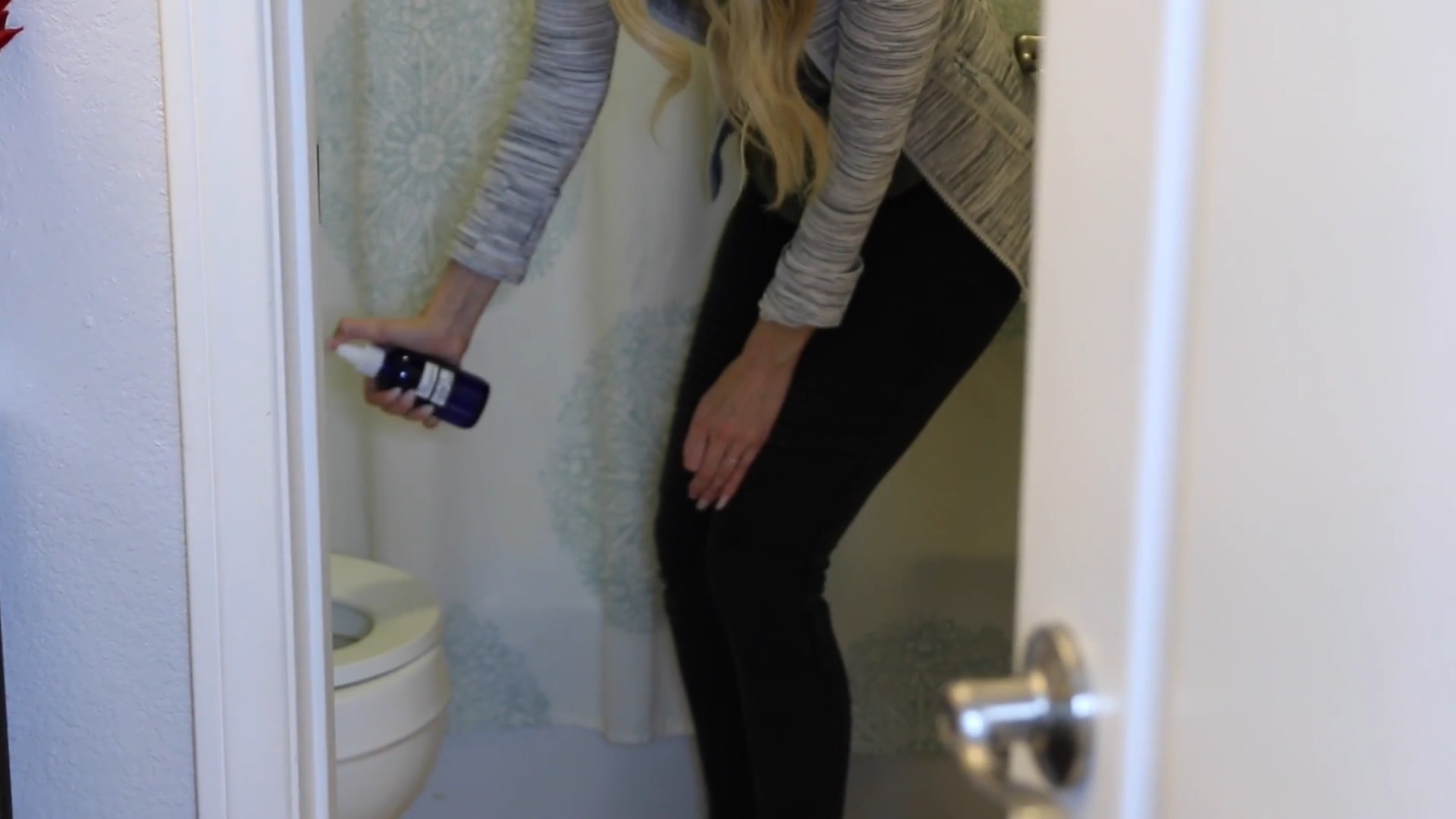Smart Home DIY Hacks – ever dreamed of a home that anticipates your needs, adjusts to your preferences, and saves you money, all while looking effortlessly chic? Well, you’re not alone! For centuries, humans have sought ways to make their living spaces more comfortable and efficient. From ancient irrigation systems to the ingenious inventions of the Victorian era, the desire to improve our homes is deeply ingrained in our history.
But let’s face it, the idea of a “smart home” can feel intimidating, conjuring images of complicated wiring and hefty price tags. That’s where these Smart Home DIY Hacks come in! I’m here to show you that creating a smarter, more connected home doesn’t require a degree in electrical engineering or a bank loan.
In today’s fast-paced world, we all crave convenience and control. These DIY tricks are designed to simplify your life, enhance your home’s functionality, and even boost its energy efficiency. Imagine controlling your lights with your voice, monitoring your home’s security from anywhere, or automating your thermostat to save on energy bills. These aren’t just futuristic fantasies; they’re achievable realities with a little ingenuity and some clever DIY solutions. So, ditch the expensive professional installations and let’s dive into the world of smart home upgrades you can tackle yourself!

Transform Your Home into a Smart Haven: Easy DIY Hacks
Okay, so you’re ready to dive into the world of smart home technology, but maybe you’re not ready to drop a fortune on fancy gadgets? I get it! That’s why I’ve put together this guide to some awesome DIY smart home hacks that are both budget-friendly and surprisingly effective. Let’s get started!
Smart Lighting on a Budget
One of the easiest ways to dip your toes into the smart home pool is with smart lighting. Forget rewiring your entire house – we’re going for simple and clever solutions here.
Hack 1: The Smart Plug Lamp Upgrade
This is probably the easiest hack on the list, but it makes a huge difference.
What you’ll need:
* A standard lamp (the more lamps, the merrier!)
* Smart plugs (Wi-Fi enabled, compatible with your preferred voice assistant like Alexa or Google Assistant)
* Your smartphone with the smart plug’s app installed
Step-by-step instructions:
1. Unpack and Set Up Your Smart Plugs: First things first, take those smart plugs out of their boxes and plug them into your wall outlets. Download the corresponding app for your smart plug brand (usually found by scanning a QR code on the packaging). Follow the app’s instructions to connect the smart plug to your home Wi-Fi network. This usually involves entering your Wi-Fi password.
2. Plug in Your Lamps: Now, unplug your lamps from the wall and plug them into the smart plugs. Make sure the lamps are switched “on” at the lamp itself. The smart plug will now control the power flow.
3. Name Your Lamps: In the smart plug app, give each smart plug a descriptive name, like “Living Room Lamp,” “Bedroom Lamp,” or “Reading Nook Lamp.” This is crucial for voice control later.
4. Test the Connection: Use the app to turn the smart plugs on and off. Your lamps should respond accordingly. If not, double-check your Wi-Fi connection and the smart plug’s setup.
5. Connect to Your Voice Assistant (Optional): If you have an Amazon Echo or Google Home device, you can connect your smart plugs to your voice assistant. In the Alexa or Google Home app, look for the “Skills” or “Works with Google” section and search for your smart plug brand. Follow the instructions to link your accounts.
6. Voice Control Magic: Now, you can control your lamps with your voice! Try saying things like, “Alexa, turn on the Living Room Lamp,” or “Hey Google, turn off the Bedroom Lamp.” Pretty cool, right?
7. Scheduling (Optional): Most smart plug apps allow you to create schedules. You can set your lamps to turn on automatically at sunset or turn off at a specific bedtime. This adds an extra layer of convenience and security.
Hack 2: DIY Motion-Activated Lighting
This is great for hallways, closets, or anywhere you want hands-free lighting.
What you’ll need:
* A standard lamp or light fixture
* A smart plug (as above)
* A Wi-Fi enabled motion sensor (compatible with IFTTT or your smart plug’s ecosystem)
* IFTTT account (if required)
Step-by-step instructions:
1. Set Up Your Smart Plug and Lamp: Follow steps 1-3 from the Smart Plug Lamp Upgrade hack above.
2. Install and Configure the Motion Sensor: Install the motion sensor in the desired location, following the manufacturer’s instructions. Connect it to your Wi-Fi network and configure its sensitivity settings. You want it to be sensitive enough to detect motion but not so sensitive that it triggers constantly.
3. Connect Motion Sensor to Smart Plug (Using IFTTT or Direct Integration): This is where things get a little more advanced. Some smart plugs and motion sensors have direct integration, meaning you can set up rules within their respective apps. If not, you’ll need to use IFTTT (If This Then That), a free web service that connects different apps and devices.
* IFTTT Method: Create an IFTTT account and connect your smart plug and motion sensor services. Create an applet that says, “If motion is detected by [your motion sensor], then turn on [your smart plug].” You’ll also want to create another applet that says, “If no motion is detected by [your motion sensor] for [a certain amount of time, like 5 minutes], then turn off [your smart plug].”
* Direct Integration Method: If your devices have direct integration, the process will be similar, but you’ll be setting up the rules within the smart plug or motion sensor app.
4. Test the Motion-Activated Lighting: Walk in front of the motion sensor. The lamp should turn on automatically. After the specified time of no motion, it should turn off. Adjust the sensitivity and timing settings as needed.
DIY Smart Security
You don’t need a professional security system to add a layer of protection to your home. These DIY hacks are simple, affordable, and effective.
Hack 3: The DIY Door/Window Sensor
This hack uses inexpensive components to create a basic but functional door or window sensor.
What you’ll need:
* Two magnetic reed switches
* Two small magnets
* An ESP8266 or ESP32 development board (these are tiny, inexpensive microcontrollers with Wi-Fi capabilities)
* Jumper wires
* A breadboard (optional, but makes prototyping easier)
* A case or enclosure (optional, for a cleaner look)
* Arduino IDE (free software for programming the ESP8266/ESP32)
* IFTTT account (optional, for notifications)
Step-by-step instructions:
1. Set Up the Hardware:
* Place the ESP8266/ESP32 on the breadboard (if using).
* Connect one end of each magnetic reed switch to a digital pin on the ESP8266/ESP32 (e.g., D2 and D3).
* Connect the other end of each reed switch to a resistor (e.g., 10k ohm) and then to ground (GND) on the ESP8266/ESP32. This creates a pull-down resistor circuit.
2. Program the ESP8266/ESP32:
* Install the Arduino IDE and the ESP8266/ESP32 board support package.
* Write code that reads the state of the digital pins connected to the reed switches. When the magnet is near the reed switch, the circuit is closed, and the pin reads HIGH. When the magnet is away, the circuit is open, and the pin reads LOW.
* The code should connect to your Wi-Fi network and send data to a service like ThingSpeak or Adafruit IO whenever the state of the reed switches changes. This data will indicate whether the door or window is open or closed.
* Here’s a simplified example of the code (you’ll need to adapt it to your specific setup and pins):
“`arduino
#include
const char* ssid = “YOUR_WIFI_SSID”;
const char* password = “YOUR_WIFI_PASSWORD”;
const int reedSwitchPin = D2; // Example pin
int reedSwitchState = 0;
void setup() {
Serial.begin(115200);
WiFi.begin(ssid, password);
while (WiFi.status() != WL_CONNECTED) {
delay(500);
Serial.print(“.”);
}
Serial.println(“WiFi connected”);
pinMode(reedSwitchPin, INPUT_PULLUP); // Use internal pull-up resistor
}
void loop() {
reedSwitchState = digitalRead(reedSwitchPin);
if (reedSwitchState == LOW) { // Reed switch is closed (magnet present)
Serial.println(“Door/Window Closed”);
// Send data to ThingSpeak or Adafruit IO here
} else { // Reed switch is open (magnet absent)
Serial.println(“Door/Window Opened”);
// Send data to ThingSpeak or Adafruit IO here
}
delay(1000); // Check every second
}
“`
3. Mount the Sensor:
* Attach one reed switch to the door or window frame and the corresponding magnet to the door or window itself. Make sure the reed switch and magnet are aligned so that they are close together when the door or window is closed.
* Repeat for the second reed switch and magnet on another door or window.
4. Set Up Notifications (Optional):
* If you’re using IFTTT, create an applet that triggers a notification whenever the data from ThingSpeak or Adafruit IO

Conclusion
So, there you have it! These smart home DIY hacks aren’t just about saving money; they’re about empowering you to create a living space that truly reflects your needs and personality. In a world increasingly dominated by pre-packaged solutions, taking the DIY route allows for unparalleled customization and a deeper connection with your home.
Why is this a must-try? Because it’s accessible, adaptable, and ultimately, incredibly rewarding. Imagine the satisfaction of controlling your lights with a voice command, knowing you built the system yourself. Think about the peace of mind knowing you’ve secured your home with a DIY security system tailored to your specific vulnerabilities. These aren’t just gadgets; they’re investments in your comfort, security, and overall quality of life.
Beyond the basic implementations we’ve discussed, the possibilities are truly endless. Consider expanding your smart lighting system to include color-changing bulbs for mood lighting, or integrating your DIY security system with a smart lock for keyless entry. You could even build a custom dashboard to monitor all your smart home devices in one place. The only limit is your imagination!
Don’t be afraid to experiment and personalize these hacks to fit your unique circumstances. Perhaps you live in an apartment and need a more discreet security solution. Or maybe you have a specific accessibility need that can be addressed with a custom-built smart home device. The beauty of DIY is that it allows you to tailor the technology to your life, rather than the other way around.
We strongly encourage you to give these smart home DIY hacks a try. Start small, with a project that seems manageable, and gradually expand your smart home ecosystem as you gain confidence and experience. The learning process is part of the fun, and the sense of accomplishment you’ll feel after successfully completing a DIY project is truly unmatched.
And most importantly, we want to hear about your experiences! Share your successes, your challenges, and your creative adaptations in the comments below. Let’s build a community of DIY smart home enthusiasts who can learn from each other and inspire others to take control of their living spaces. Your insights could be invaluable to someone just starting out on their smart home journey. So, get hacking, get creating, and get ready to experience the power of a truly personalized smart home!
Frequently Asked Questions (FAQs)
What are the essential tools I need to get started with these smart home DIY hacks?
The tools you’ll need will vary depending on the specific project, but a good starting point includes a basic toolkit with screwdrivers, pliers, wire strippers, and a multimeter. A soldering iron and solder are essential for many electronics projects. A Raspberry Pi or Arduino board is often used as the brains of many smart home DIY projects, so familiarity with these platforms is helpful. Finally, access to a computer with internet access for research and programming is crucial. Consider investing in a breadboard for prototyping circuits before soldering them permanently.
I’m not very tech-savvy. Are these smart home DIY hacks really for me?
Absolutely! While some projects may seem intimidating at first, there are plenty of beginner-friendly options available. Start with a simple project like automating a single light with a smart plug and a voice assistant. There are countless online tutorials and resources available to guide you through each step. Don’t be afraid to ask for help from online communities or forums. The key is to break down complex projects into smaller, more manageable steps. Remember, everyone starts somewhere, and even experienced DIYers were once beginners. Focus on learning one skill at a time, and you’ll be surprised at how quickly you progress.
How much money can I realistically save by doing these smart home DIY hacks instead of buying pre-made products?
The savings can be significant, especially for more complex smart home systems. Pre-made smart home devices often come with a premium price tag, while the components for DIY projects are typically much cheaper. For example, a DIY security system can save you hundreds of dollars compared to a professionally installed system. Similarly, building your own smart lighting system can be significantly cheaper than buying individual smart bulbs and hubs. However, it’s important to factor in the cost of your time and the potential for errors. Sometimes, the convenience of a pre-made product may be worth the extra cost.
What are the potential security risks associated with DIY smart home devices, and how can I mitigate them?
Security is a crucial consideration when building your own smart home devices. DIY devices may be more vulnerable to hacking if not properly secured. To mitigate these risks, always use strong passwords for all your devices and accounts. Keep your software and firmware up to date to patch any known vulnerabilities. Consider using a separate Wi-Fi network for your smart home devices to isolate them from your main network. Implement firewalls and intrusion detection systems to monitor network traffic. Encrypt your data whenever possible. Research common security vulnerabilities in DIY smart home devices and take steps to address them. Regularly audit your security setup to identify and fix any weaknesses.
Can I integrate my DIY smart home devices with existing smart home ecosystems like Amazon Alexa or Google Assistant?
Yes, in most cases, you can integrate your DIY smart home devices with popular smart home ecosystems. Many DIY platforms like Raspberry Pi and Arduino have libraries and APIs that allow you to connect to Alexa, Google Assistant, and other platforms. You may need to write some code to create the integration, but there are plenty of online tutorials and examples to guide you. Some platforms also offer pre-built integrations that make the process even easier. Integrating your DIY devices with existing ecosystems allows you to control them with voice commands and automate them with other smart home devices.
What are some common mistakes to avoid when starting with smart home DIY hacks?
One common mistake is biting off more than you can chew. Start with a simple project and gradually work your way up to more complex ones. Another mistake is not doing enough research before starting a project. Make sure you understand the components, the code, and the potential risks involved. Don’t skip steps in the instructions, and double-check your work before powering on any devices. Be careful when working with electricity, and always disconnect power before making any changes to wiring. Finally, don’t be afraid to ask for help from online communities or forums.
What are some alternative materials I can use for these projects if I can’t find the exact components listed?
The beauty of DIY is its adaptability. If you can’t find the exact components listed in a tutorial, you can often substitute them with similar alternatives. For example, if you can’t find a specific type of sensor, you can often use a different sensor that performs the same function. Just make sure to research the specifications of the alternative component and adjust your code or wiring accordingly. Online forums and communities are a great resource for finding alternative components and troubleshooting any compatibility issues.
How can I ensure my DIY smart home devices are energy-efficient?
Energy efficiency is an important consideration for any smart home device, whether it’s DIY or pre-made. To ensure your DIY devices are energy-efficient, choose low-power components whenever possible. Use sleep modes or power-saving features to reduce energy consumption when the device is not in use. Optimize your code to minimize processing power and reduce unnecessary calculations. Consider using solar power or other renewable energy sources to power your devices. Regularly monitor the energy consumption of your devices and make adjustments as needed.
What are the legal and ethical considerations when building and using DIY smart home devices, especially those involving cameras or microphones?
It’s crucial to be aware of the legal and ethical implications of building and using DIY smart home devices, especially those involving cameras or microphones. Respect the privacy of others and avoid recording or monitoring people without their consent. Comply with all applicable laws and regulations regarding surveillance and data collection. Be transparent about the presence of cameras and microphones in your home. Secure your devices to prevent unauthorized access and protect the privacy of your data. Consider the potential for misuse of your devices and take steps to prevent it.
Where can I find reliable resources and communities for learning more about smart home DIY hacks?
There are many excellent resources and communities available online for learning more about smart home DIY hacks. Some popular websites include Instructables, Hackaday, and Adafruit. Online forums like Reddit’s r/homeautomation and r/raspberry_pi are great places to ask questions and get help from other DIYers. YouTube is also a valuable resource for finding tutorials and demonstrations. Consider joining a local maker space or hackerspace to connect with other DIY enthusiasts in person.




Leave a Comment